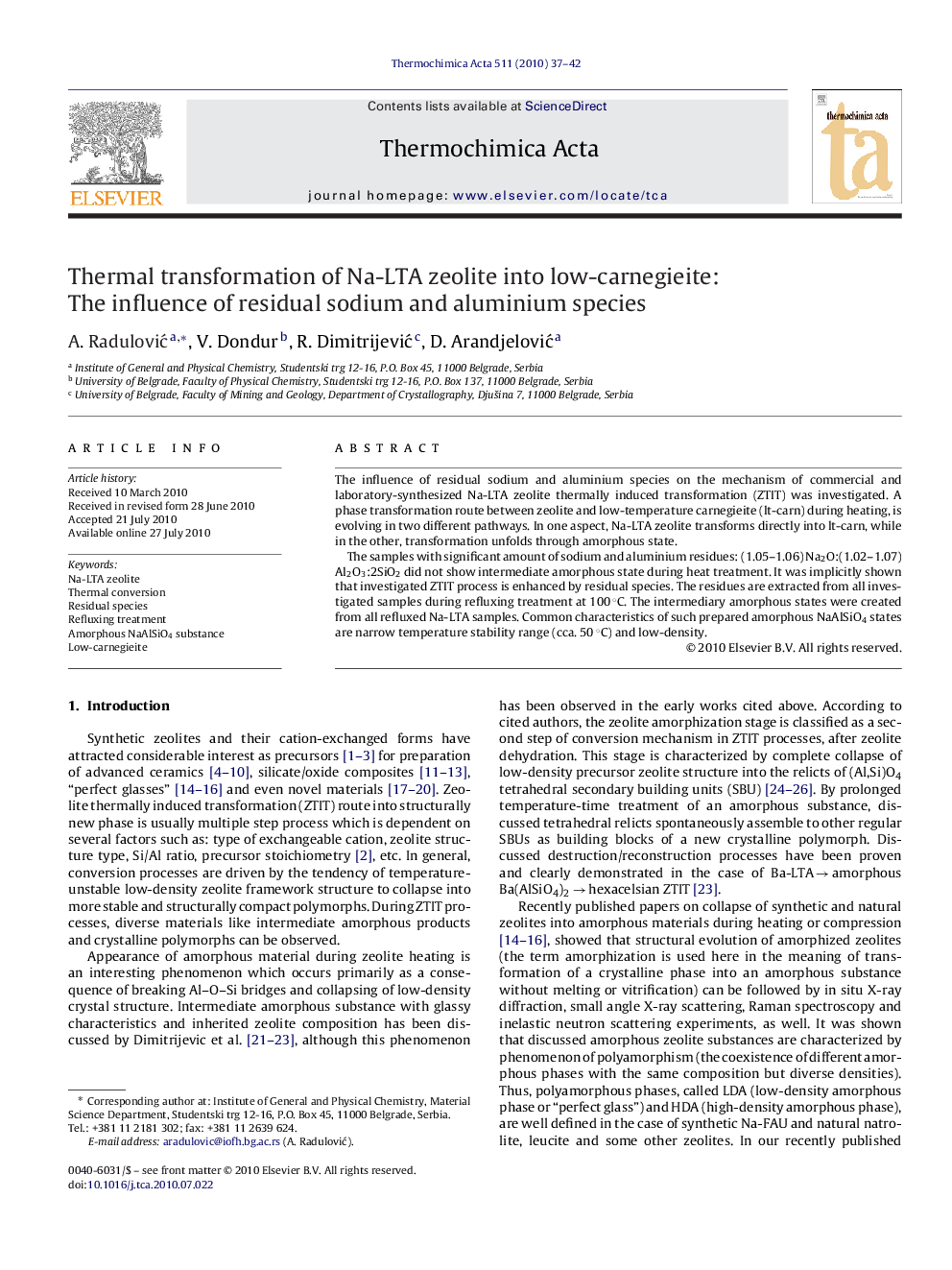| Article ID | Journal | Published Year | Pages | File Type |
|---|---|---|---|---|
| 674704 | Thermochimica Acta | 2010 | 6 Pages |
The influence of residual sodium and aluminium species on the mechanism of commercial and laboratory-synthesized Na-LTA zeolite thermally induced transformation (ZTIT) was investigated. A phase transformation route between zeolite and low-temperature carnegieite (lt-carn) during heating, is evolving in two different pathways. In one aspect, Na-LTA zeolite transforms directly into lt-carn, while in the other, transformation unfolds through amorphous state.The samples with significant amount of sodium and aluminium residues: (1.05–1.06) Na2O:(1.02–1.07) Al2O3:2SiO2 did not show intermediate amorphous state during heat treatment. It was implicitly shown that investigated ZTIT process is enhanced by residual species. The residues are extracted from all investigated samples during refluxing treatment at 100 °C. The intermediary amorphous states were created from all refluxed Na-LTA samples. Common characteristics of such prepared amorphous NaAlSiO4 states are narrow temperature stability range (cca. 50 °C) and low-density.
